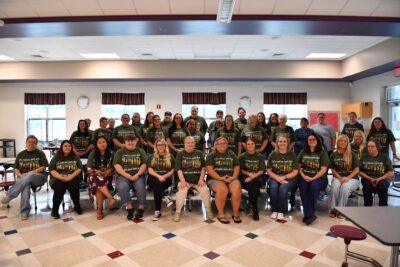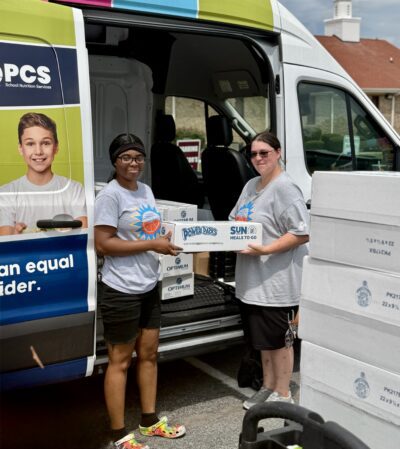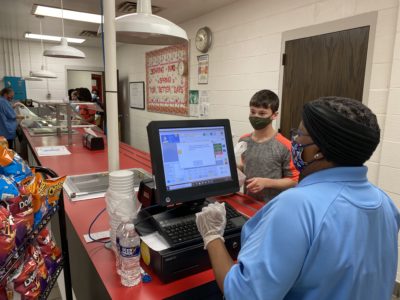
When students walk into my classroom, there’s a familiar rhythm. Some greet me with a smile and a hug, some head straight to their seats, and others quietly make their way to the back of the room, where something special lives. A granola bar here. A fruit cup there. A warm smile and a whispered “thank you.”
That space is what we call the Cozy Kitchen. It’s just a small, simple space in the back of my classroom where students can grab a snack to get them through the day or pack a bag to take home if they need a little more. It isn’t fancy, and it doesn’t need to be. It’s a place where hunger is met with dignity, not judgment. And somehow, that little corner of care has become one of the most powerful parts of our classroom community. It is not just about filling stomachs. It is about restoring dignity, safety, and the foundation for learning.
Erasing the stigma: The power of normalizing need
At Broadview Middle School, where I teach sixth grade social studies and science, we serve a student population rich in potential but often burdened by circumstances beyond their control. As a Title I school, we offer free breakfast and lunch to all students, but gaps still exist — especially during non-school hours, weekends, or when family food insecurity silently takes hold.
I’ve seen what hunger does to a child’s ability to learn. I’ve seen the head down on the desk, the short temper, the inability to focus, the anxiety about how much food will be at home that night. No worksheet or lesson plan can overcome the physiological need for nourishment.
The most beautiful part of the Cozy Kitchen isn’t just what it provides, it’s what it erases. In my classroom, food insecurity carries no shame. Students aren’t nervous or embarrassed to say they need something. They don’t lower their voices or wait for others to leave the room. They’ll ask me for a snack or a meal bag whether we’re alone or in front of a crowd. The stigma is gone.
![]() Sign up for the EdWeekly, a Friday roundup of the most important education news of the week.
Sign up for the EdWeekly, a Friday roundup of the most important education news of the week.
That culture didn’t happen overnight. It’s been built through consistency, compassion, and clear expectations: This is a safe space, and everyone deserves to eat. Whether they need a single granola bar to get through the day or a full bag of items to take home, my students know they are seen and they are never judged.
That little corner has done something far bigger than hold snacks, it has erased the stigma around needing help and sends the message that hunger will not be a hidden struggle in my classroom.
When students’ basic needs are met, they’re more focused, more confident, and more ready to learn. You can’t always measure that on a spreadsheet, but you can feel it in the room.
Fueling equity with action
In education, we often talk about closing opportunity gaps. But what about closing access gaps? You cannot teach to the whole child if you ignore the whole life they are living outside your classroom walls.
Food insecurity is not a separate issue from academic success. It is a core issue. And it’s one we can address, with intentionality, compassion, and creativity.
Our Cozy Kitchen isn’t a standalone project. It’s part of a broader philosophy: Students can’t learn if they don’t feel safe, seen, and supported. Whether it’s through clean clothing, through our Fresh Start Initiative, or a snack offered during homeroom, my classroom is built around this truth.
Educators already carry so much. What I’ve built in my classroom didn’t come from extra time or resources, it came from love and necessity.
As a champion for School Meals for All NC, I know the issue of food insecurity goes far beyond my classroom walls. That’s why I use my voice to advocate for policies that ensure every student has access to nutritious meals without barriers, without stigma, and without exceptions.
If you’re a community member, policymaker, or district leader, ask yourself: How can we make sure students’ basic needs are met before they even enter the classroom? Could schools be better supported with funding for snack programs, food partnerships, or wraparound services? Could businesses, faith communities, and local organizations step in to help sustain these efforts?
Meeting food insecurity should be part of a broader effort to create strong, safe, and equitable school communities.
Food is not a privilege. It’s a prerequisite.
Recommended reading



